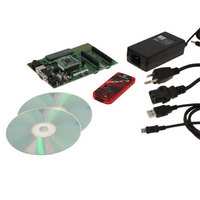DV164136 Microchip Technology, DV164136 Datasheet - Page 49

DV164136
Manufacturer Part Number
DV164136
Description
DEVELOPMENT KIT FOR PIC18
Manufacturer
Microchip Technology
Series
PIC®r
Type
MCUr
Datasheets
1.DM183032.pdf
(38 pages)
2.DV164136.pdf
(448 pages)
3.DV164136.pdf
(6 pages)
4.DV164136.pdf
(446 pages)
5.DV164136.pdf
(4 pages)
6.DV164136.pdf
(18 pages)
Specifications of DV164136
Contents
Board, Cables, CDs, PICkit™ 3 Programmer, Power Supply
Processor To Be Evaluated
PIC18F8722, PIC18F87J11
Interface Type
RS-232, USB
Operating Supply Voltage
3.3 V, 5 V
Silicon Manufacturer
Microchip
Core Architecture
PIC
Core Sub-architecture
PIC18
Silicon Core Number
PIC18F
Silicon Family Name
PIC18F8xxx
Kit Contents
PIC18 Exp Brd PICkit 3 Cable CD PSU
Lead Free Status / RoHS Status
Lead free / RoHS Compliant
For Use With/related Products
PIC18F8722, PIC18F87J11
Lead Free Status / Rohs Status
Lead free / RoHS Compliant
Available stocks
Company
Part Number
Manufacturer
Quantity
Price
Company:
Part Number:
DV164136
Manufacturer:
MICROCHIP
Quantity:
12 000
- DM183032 PDF datasheet
- DV164136 PDF datasheet #2
- DV164136 PDF datasheet #3
- DV164136 PDF datasheet #4
- DV164136 PDF datasheet #5
- DV164136 PDF datasheet #6
- Current page: 49 of 448
- Download datasheet (8Mb)
3.4.3
In RC_IDLE mode, the CPU is disabled but the
peripherals continue to be clocked from the internal
oscillator block. This mode allows for controllable
power conservation during Idle periods.
From RC_RUN, this mode is entered by setting the
IDLEN bit and executing a SLEEP instruction. If the
device is in another Run mode, first set IDLEN, then
clear the SCS bits and execute SLEEP. When the clock
source is switched to the INTOSC block, the primary
oscillator is shut down and the OSTS bit is cleared.
When a wake event occurs, the peripherals continue to
be clocked from the internal oscillator block. After a
delay of T
begins executing code being clocked by the INTRC.
The IDLEN and SCS bits are not affected by the
wake-up. The INTRC source will continue to run if
either the WDT or the Fail-Safe Clock Monitor is
enabled.
3.5
An exit from Sleep mode, or any of the Idle modes, is
triggered by an interrupt, a Reset or a WDT time-out.
This section discusses the triggers that cause exits
from power-managed modes. The clocking subsystem
actions are discussed in each of the power-managed
modes sections (see Section 3.2 “Run Modes”,
Section 3.3 “Sleep Mode” and Section 3.4 “Idle
Modes”).
3.5.1
Any of the available interrupt sources can cause the
device to exit from an Idle mode, or the Sleep mode, to
a Run mode. To enable this functionality, an interrupt
source must be enabled by setting its enable bit in one
of the INTCON or PIE registers. The exit sequence is
initiated when the corresponding interrupt flag bit is set.
On all exits from Idle or Sleep modes by interrupt, code
execution branches to the interrupt vector if the
GIE/GIEH bit (INTCON<7>) is set. Otherwise, code
execution continues or resumes without branching
(see Section 9.0 “Interrupts”).
A fixed delay of interval, T
is required when leaving Sleep and Idle modes. This
delay is required for the CPU to prepare for execution.
Instruction execution resumes on the first clock cycle
following this delay.
© 2009 Microchip Technology Inc.
Exiting Idle and Sleep Modes
CSD
EXIT BY INTERRUPT
RC_IDLE MODE
following the wake event, the CPU
CSD
, following the wake event
PIC18F87J11 FAMILY
3.5.2
A WDT time-out will cause different actions depending
on which power-managed mode the device is in when
the time-out occurs.
If the device is not executing code (all Idle modes and
Sleep mode), the time-out will result in an exit from the
power-managed
Modes” and Section 3.3 “Sleep Mode”). If the device
is executing code (all Run modes), the time-out will
result in a WDT Reset (see Section 24.2 “Watchdog
Timer (WDT)”).
The Watchdog Timer and postscaler are cleared by one
of the following events:
• Executing a SLEEP or CLRWDT instruction
• The loss of a currently selected clock source (if
3.5.3
Exiting an Idle or Sleep mode by Reset automatically
forces the device to run from the INTRC.
3.5.4
Certain exits from power-managed modes do not
invoke the OST at all. There are two cases:
• PRI_IDLE mode, where the primary clock source
• The primary clock source is either the EC or
In these instances, the primary clock source either
does not require an oscillator start-up delay, since it is
already running (PRI_IDLE), or normally does not
require an oscillator start-up delay (EC). However, a
fixed delay of interval, T
is still required when leaving Sleep and Idle modes to
allow the CPU to prepare for execution. Instruction
execution resumes on the first clock cycle following this
delay.
the Fail-Safe Clock Monitor is enabled)
is not stopped; and
ECPLL mode.
EXIT BY WDT TIME-OUT
EXIT BY RESET
EXIT WITHOUT AN OSCILLATOR
START-UP DELAY
mode
CSD
(see
, following the wake event
Section 3.2
DS39778D-page 49
“Run
Related parts for DV164136
Image
Part Number
Description
Manufacturer
Datasheet
Request
R

Part Number:
Description:
Manufacturer:
Microchip Technology Inc.
Datasheet:

Part Number:
Description:
Manufacturer:
Microchip Technology Inc.
Datasheet:

Part Number:
Description:
Manufacturer:
Microchip Technology Inc.
Datasheet:

Part Number:
Description:
Manufacturer:
Microchip Technology Inc.
Datasheet:

Part Number:
Description:
Manufacturer:
Microchip Technology Inc.
Datasheet:

Part Number:
Description:
Manufacturer:
Microchip Technology Inc.
Datasheet:

Part Number:
Description:
Manufacturer:
Microchip Technology Inc.
Datasheet:

Part Number:
Description:
Manufacturer:
Microchip Technology Inc.
Datasheet:











